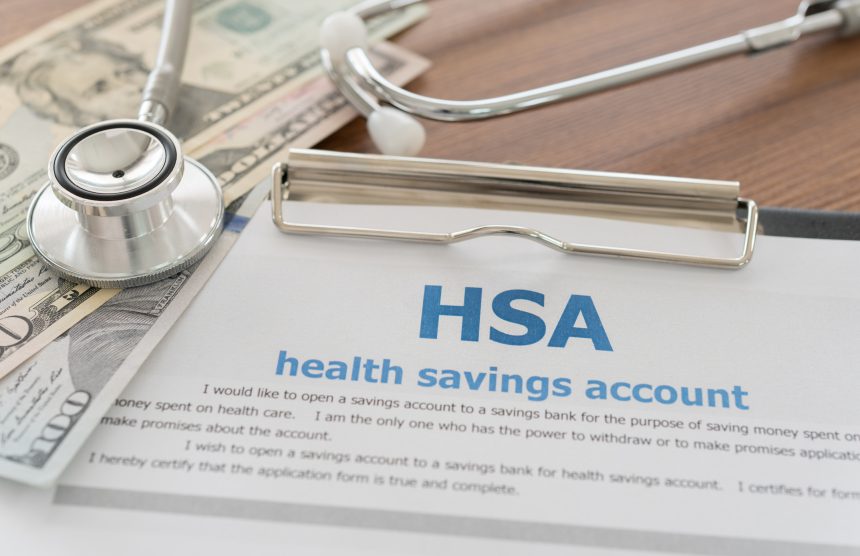If you’ve made contributions to or taken distributions from a health savings account (HSA), the IRS requires you to report it on your yearly taxes. That’s where Form 8889 comes in. It details contributions, distributions and potential tax deductions so you can report all HSA-related activities to remain compliant as well as optimize your tax benefits. Accurately filling out Form 8889 can not only help you save on your taxes, but also better prepare and plan for healthcare costs.
If you have questions or need help managing an HSA, consider reaching out to a financial advisor.
Have Questions About Your Taxes?
A financial advisor may be able to help. Match with an advisor serving your area today.
Get Started Now
What Is a Health Savings Account?
A health savings account is a tax-advantaged savings account designed specifically for individuals who have qualified high-deductible health plans (HDHPs). HSAs allow you to set aside pre-tax dollars and use them for qualified medical expenses.
HSA contributions are tax-deductible, thereby lowering your taxable income. The funds in an HSA also grow tax-free, and qualified withdrawals for medical expenses are tax-deferred, as well. This triple tax advantage helps maximize savings and minimize the financial burden of healthcare-related costs.
You should note that while HSA’s are only available for individuals with HDHPs, you could still keep the account and make distributions if you get different coverage, but you can’t make any more contributions.
How Can You Use an HSA?

The funds in an HSA can be used to cover the cost of medical expenses such as deductibles, copayments, prescription medications and other eligible expenses. And health savings accounts aren’t just for immediate expenses; they can be used for future healthcare needs. Unlike flexible spending accounts (FSAs), HSA funds roll over year to year. This allows you to build a substantial healthcare nest egg over time, and can be especially beneficial in retirement, when medical expenses often increase.
To maximize your HSA benefits, consider contributing the maximum allowed amount each year. For 2024, the HSA contribution limits are $4,150 for individuals and $8,300 for families. Additionally, individuals aged 55 and older can make catch-up contributions of up to $1,000 annually.
HSAs also offer long-term investment opportunities. Many HSA providers allow you to invest a portion of your funds in mutual funds, stocks, or bonds, similar to a retirement account. The earnings from these investments grow tax-deferred, providing another way to increase your healthcare savings over time.
How to File Health Savings Account Tax Form 8889
Part of properly managing an HSA involves understanding the health savings account tax form 8889. This form must be filed with your tax return if you’ve contributed to or taken a distribution from your HSA. Form 8889 details contributions, distributions, and the tax implications of your HSA activities. Completing this form accurately is necessary to ensure your compliance with IRS regulations. It also ensures you maximize your tax benefits.
On health savings account tax form 8889, you’ll report all contributions made to your health savings account, including those made by your employer. Remember, these contributions are typically tax-deductible, reducing your taxable income. The form allows the IRS to verify that contributions don’t exceed the annual limit.
Health savings account tax form 8889 also requires you to report any distributions taken from your HSA. Distributions used for qualified medical expenses are tax-free, while those used for non-qualified expenses are subject to income tax and an additional 20% penalty (unless you’re 65 or older). You’ll need to refer to your plan document to see what is considered a qualified medical expense.
Bottom Line

Form 8889 is key when it comes to managing the tax implications of your health savings account. By accurately reporting contributions and distributions, and ensuring that distributions are used for HSA eligible medical expenses, you can fully leverage the tax benefits associated with your HSA while remaining compliant with IRS regulations. Whether you’re saving for current medical expenses or planning for future healthcare needs, understanding and correctly filing Form 8889 can help you maximize your HSA and safeguard your future.
Health Savings Account Tips
- When you’re making serious retirement- or healthcare-focused decisions, it can be helpful to seek the help of a financial advisor. Finding a financial advisor doesn’t have to be hard. SmartAsset’s free tool matches you with up to three vetted financial advisors who serve your area, and you can have a free introductory call with your advisor matches to decide which one you feel is right for you. If you’re ready to find an advisor who can help you achieve your financial goals, get started now.
- If you haven’t started already, consider investing in a tax-advantaged retirement plan such as a 401(k) or an individual retirement account (IRA).
Photo credit: ©iStock.com/utah778, ©iStock.com/AsiaVision, ©iStock.com/AsiaVision
Read the full article here














